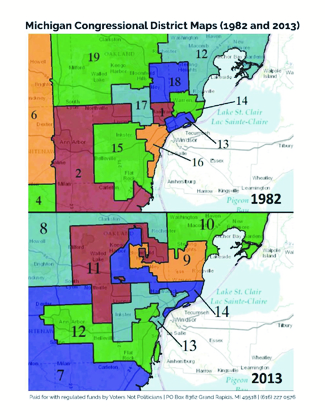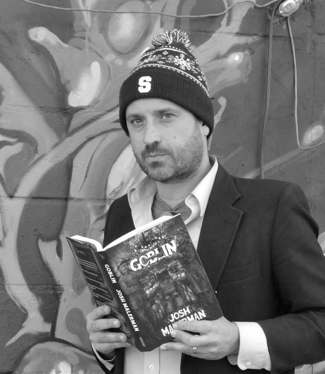Story by Sara E. Teller
The Oak Park Public Safety Department is a busy place to be. Its Director, Steve Cooper, and his team are cross-trained as police officers, fire fighters, and medical first responders. The Department was the first in the state to combine these services, and Cooper said the structure works really well.
Cooper was selected for the Police Officer Association of Michigan’s 2016 Award, which was issued that May. “I was nominated by my staff. We have so many great men and women. To be nominated by individuals you work with on a daily basis, to know they think highly enough of you to submit you for this, is extremely humbling.” he said. Director Cooper has a plaque on his wall, but jokes, “I really can’t get any mileage off of that anymore. You always have to stay focused and humble.”
Cooper has been with the Department for 28 years, and said public safety officers have been cross-trained for as long as he can remember. “It’s been that way since 1954. Everyone in the Department completes police academy training, training with the fire department, and additional medical first response training. We have individuals looking to join our team that come in already police-certifiable, too, and we just go from there,” he explained.
Once training is complete, public safety officers start their days in police uniform, carrying additional gear and tools with them so they can easily transition roles if needed. “They’ll ride around on patrol with a duffle bag full of fire gear, an extinguisher, and a medical box,” Cooper explained. “If needed, they’ll change right there in the street.”
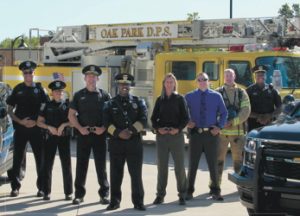 He said the department always has stand-by officers at the station, as well. “Our stand-by officers are there to process prisoners and handle walk-in complaints. If there’s a fire emergency, we stop what we’re doing and put prisoners in lock-down so officers can jump in a fire truck and respond. We also partner with neighboring departments like Beverly Hills, Berkley, and Huntington Woods, and will call in off-duty staff if we need to.”
He said the department always has stand-by officers at the station, as well. “Our stand-by officers are there to process prisoners and handle walk-in complaints. If there’s a fire emergency, we stop what we’re doing and put prisoners in lock-down so officers can jump in a fire truck and respond. We also partner with neighboring departments like Beverly Hills, Berkley, and Huntington Woods, and will call in off-duty staff if we need to.”
To determine whether officers are ready to hit the road, they undergo what’s called a “shadow phase.” Cooper explained, “In this phase, you ride around with a senior officer who is in civilian clothes and handle all the calls. You’re given feedback, and this determines if you’re ready.”
OAK PARK’S PUBLIC SAFETY DEPARTMENT has many community policing initiatives that really make it stand out. The Department recently started a canine unit and took on Canine Officer Mase. “We found Mase at Vohne Liche Kennels in Indiana. They house dogs that undergo special training in their six-week courses. They join bomb squads and police departments, and really are a valuable tool,” Cooper said. “He’s been doing extremely well, just a really great job, and he has grown leaps and bounds since day one.” Mase is named after Oak Park’s fallen officer Mason Samborski.
Every day, Mase is out in the field responding to calls with Officer Mike Hodakoski who, after an intense interview process, was selected to serve as Mase’s handler. “We sent out correspondence to our staff, then conducted an extensive interview process with everyone who showed interest, including home interviews and oral boards. We brought in master-handlers who had canines. It takes a lot of time and commitment to work with Mase. Training is conducted once a week, which needs to be logged and the handler needs to do different activities with him. This really becomes everything you do.”
He said it takes a special kind of person to understand Mase’s role with the Department. “The canine is a tool used for many different things, and socialization is part of it as well. We need to make sure he interacts with the public. Now that Officer Hodakoski has had a chance to bond with Mase, we’ll be able to bring him to schools and conduct demonstrations to students. It’s important for people to realize Mase is not just an at-tack dog. He follows directions and commands very well, and can go from chasing down a bad guy to being completely docile.”
THE DEPARTMENT ALSO LAUNCHED AN ICE CREAM TRUCK INITIATIVE last summer in an effort to build upon its relationship with the Oak Park community and to make the first interaction with police a pleasant one. “One of my detectives had approached me with the thought that this would be a great way to engage with the community. I like to say, you never get a second chance to make a first impression, so make it a positive one,” Cooper said. “The truck goes to events like end-of-the-year school celebrations and block parties. It’s not just for the children either. While it’s a great tool for the youth, it’s a great tool for adults, too. We take turns riding up and down the street, sharing free ice cream.”
Oak Park’s Department of Public Works donated the van that’s used, and the Public Safety Department solicited the help of local sponsors to decorate it and get it ready for the road. Prairie Farms donates ice cream every week. The truck runs from the last day of school through Labor Day weekend. “It’s a nice conversation piece,” Cooper said. “People were a bit shocked at first. Then, they started asking when the truck was coming to their neighborhood.”
The Department also has a Community Resource Officer, Devon Benson, who wears many hats. Benson interacts with all three public school systems Oak Park is responsible for, including Oak Park, Berkley and Ferndale, and is the City’s liaison for block clubs, making public appearances and demonstrations at community and city functions.
“Officer Benson helps neighborhoods set up block clubs. He gets them up and going,” Cooper explained. “He attends all meetings and events for the clubs, including summer block parties, and provides updates at these meetings. Mase attended one of these. They are a forum to solve problems and exchange ideas.”
As far as working with the schools, “Oak Park handles student programs for three districts and Benson hosts various programs, such as meet-and-greets and stranger-danger demonstrations,” Cooper said. “He also works with the private schools of Oak Park’s Jewish community, as well as local nursery schools and preschools.”
When not in meetings or at schools, Officer Benson manages Oak Park’s 15 crossing guards, mediates neighborhood complaints and issues, and handles vehicle fleet changeovers. He is a highly visible member of the Public Safety Department.
OAK PARK PERIODICALLY OFFERS AN INTERACTIVE OAK PARK PUBLIC SAFETY CITIZENS ACADEMY and Junior Citizens Academy to the community. These classes are designed for those who have an interest in learning about law enforcement, fire safety, evidence processing, and medical first response. They spend time with various members of the Public Safety team learning things like how to process fingerprints,
how to pick up subjects for a police line-up, how to dress like a firefighter, how police are trained to respond to dangerous situations, and what a firefighter does when responding to a scene to help contain the fire and get people out of harm’s way.
“Detective Robert Cook approached me with the idea,” Cooper said. “We never had a Citizen’s Academy before, and he thought it would be helpful to invite the community to see what goes on behind the curtain, so to speak. We use a firearms training simulator, which is interactive. Actors on screen are given demands. Some obey, some don’t, and we react accordingly.”
The Academy offers a great way for residents to gain a better understanding of what officers face in the field. “They see things on the news and wonder why an officer responded a certain way, but don’t realize we only have a split second to react. You can go into a gas station for a Slurpie, and in the blink of an eye, a robbery is in progress,” Cooper explained. “We lay out all of the equipment and ask residents to try it on. Just our police vests and gun belts are very heavy and can be exhausting to wear for hours on end. They can also operate fire trucks, squirt water from the trucks, and explore the jaws-of-life. Our evidence technicians and special response team direct particular segments, and participants are shown patrol and traffic operations, the detective’s bureau, criminal procedures, forensics, the 9-1-1 dispatch area. This year they’ll be shown a real homicide case and go through how it was responded to. It’s interactive in every way.”
Classes are offered on a first-come, first-serve basis with roughly 25 people per class. Details are posted on social media and on the City’s web site. They include instructions regarding how interested residents can enroll. For more information, contact Detective Robert Koch at (248) 691-7514.
“We did a pilot program with Oak Park High School students,” Cooper said of the Junior Citizen’s Academy. “We basically covered the same concepts, but tweaked them a bit to appeal to 16- to 18-year-olds. The programs have been a huge success. They really help us to build a good relationship with the community. It’s very rewarding.” The next round of the Oak Park Public Safety’s Citizens Academy will be held every Wednesday in May 2018 from 6:00 to 9:00 P.M. Those interested in enrolling should contact Detective Koch at (248) 691-7514.
For more information not he Public Safety Department, including information regarding any of the department’s initiatives and events, or how to register for upcoming classes, please visit www.oakparkmi.gov/departments/public_safety

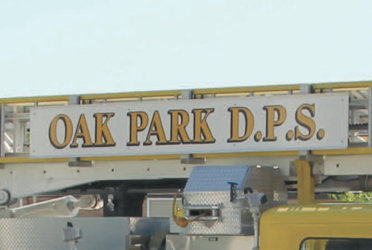
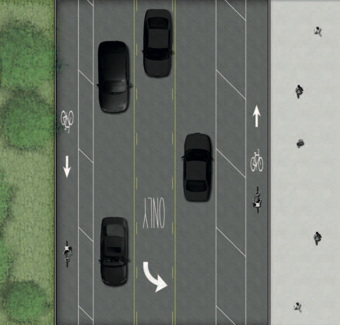
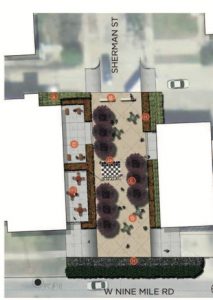 musical entertainment, exercise classes, art and STEAM programs from the Oak Park Library and Recreation Department. Sherman Street residents were asked for input and invited to help create the space. In feedback following the pop-up park, 83 per cent of survey responses said they were in favor of the permanent park. The City applied for, and received, a grant from Oakland County.
musical entertainment, exercise classes, art and STEAM programs from the Oak Park Library and Recreation Department. Sherman Street residents were asked for input and invited to help create the space. In feedback following the pop-up park, 83 per cent of survey responses said they were in favor of the permanent park. The City applied for, and received, a grant from Oakland County.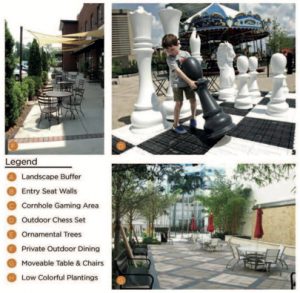 area. Not one item went missing from the temporary pop-up park; creating more of a crowd typically creates less crime. The Public Safety Department reported that emergency vehicle and bus access was not impeded, and noise and vandalism was not an issue.
area. Not one item went missing from the temporary pop-up park; creating more of a crowd typically creates less crime. The Public Safety Department reported that emergency vehicle and bus access was not impeded, and noise and vandalism was not an issue.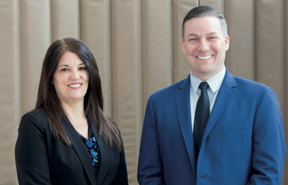
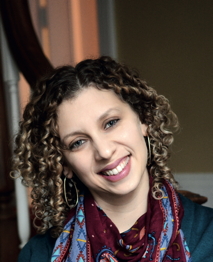
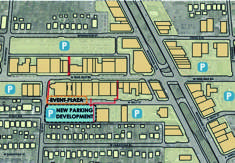
 approved plans for a mixed-use parking structure on West Troy near Allen at its October 23 Council meeting. Dubbed “The Dot” (‘Development On Troy’), the project features 397 much-needed off-street parking spaces. It will also house over 14,500 square feet of ground floor retail and commercial space, over 39,800 square feet of office space, and a stand-alone residential development capable of supporting 14 to 25 units.
approved plans for a mixed-use parking structure on West Troy near Allen at its October 23 Council meeting. Dubbed “The Dot” (‘Development On Troy’), the project features 397 much-needed off-street parking spaces. It will also house over 14,500 square feet of ground floor retail and commercial space, over 39,800 square feet of office space, and a stand-alone residential development capable of supporting 14 to 25 units.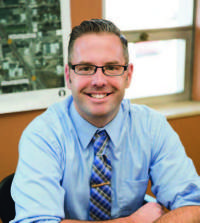 Assistant City Manager Joe Gacioch provided me with an update on the progress since the October approval of the DOT.
Assistant City Manager Joe Gacioch provided me with an update on the progress since the October approval of the DOT. testing periods (Small Business Saturday weekend, November 24-26, and during the DDA Holiday Lights Festival, December 8-10). The City is also looking to rent a parking lot close to downtown to add more parking spaces during the construction period.
testing periods (Small Business Saturday weekend, November 24-26, and during the DDA Holiday Lights Festival, December 8-10). The City is also looking to rent a parking lot close to downtown to add more parking spaces during the construction period.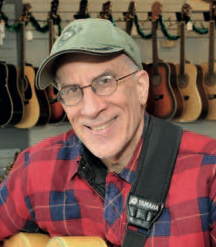 Pat Doran, Professional Guitars
Pat Doran, Professional Guitars Chris Best, The Rust Belt
Chris Best, The Rust Belt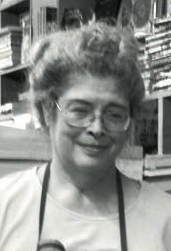 Martha Sempliner, Owner Library Bookstore
Martha Sempliner, Owner Library Bookstore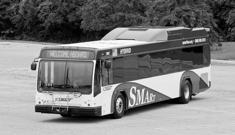

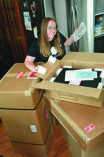 patron or you’re just giving this article a quick look, you’re part of making our dream come true. Ferndale Radio has live programming on the air, and you made it happen.
patron or you’re just giving this article a quick look, you’re part of making our dream come true. Ferndale Radio has live programming on the air, and you made it happen.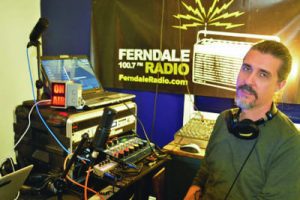 of volunteers has been happily filling our live schedule, and we’re delivering music that’s rarely — if ever —heard anywhere else on the FM dial.
of volunteers has been happily filling our live schedule, and we’re delivering music that’s rarely — if ever —heard anywhere else on the FM dial.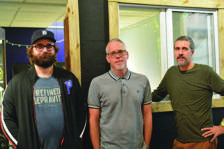 sporting events and talk shows just as soon as we get our sea legs, and we hope to have a variety of specialty programming and a livestream up and running sometime in 2018.
sporting events and talk shows just as soon as we get our sea legs, and we hope to have a variety of specialty programming and a livestream up and running sometime in 2018.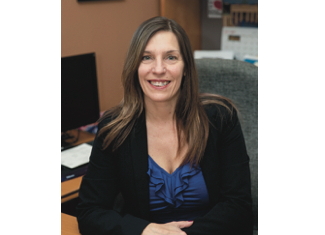
 Clinton 3) Johnson, etc. With IRV, no candidate can be elected until they have received at least 50% + 1 vote.
Clinton 3) Johnson, etc. With IRV, no candidate can be elected until they have received at least 50% + 1 vote.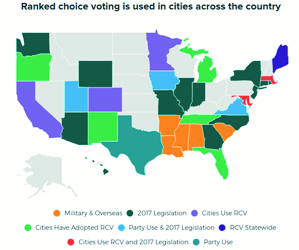 which instruct the voter how to mark their ballot. Recent feedback from the Secretary of State suggests that several changes to current election law are required to move forward. Most recently, ballot instructions have been reviewed by Ruth Johnson’s office and are currently being reviewed by Legislative Services.
which instruct the voter how to mark their ballot. Recent feedback from the Secretary of State suggests that several changes to current election law are required to move forward. Most recently, ballot instructions have been reviewed by Ruth Johnson’s office and are currently being reviewed by Legislative Services.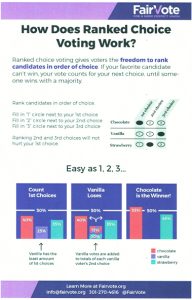 directly impact the quality of life in Ferndale. My background is in customer service, and I believe a customer-oriented mindset is crucial to effective public service. Prior to Ferndale I worked in the hospitality industry. I feel that every work experience has value, but none more so than being our City Clerk. I envision a future where we continue to be innovative, diverse, and always evolving to find the best ways to serve our residents.
directly impact the quality of life in Ferndale. My background is in customer service, and I believe a customer-oriented mindset is crucial to effective public service. Prior to Ferndale I worked in the hospitality industry. I feel that every work experience has value, but none more so than being our City Clerk. I envision a future where we continue to be innovative, diverse, and always evolving to find the best ways to serve our residents.